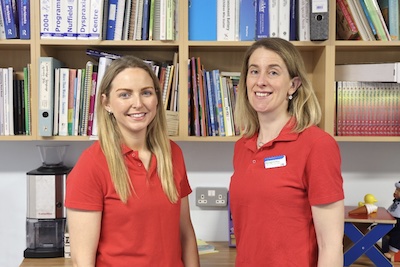Speech and Language Therapy provides assessment, treatment and support for individuals in the areas of communication, eating, drinking and swallowing. Speech and Language Therapy looks at how we send messages and communicate with others as well as how we understand and interpret the messages that are sent to us.
Speech and Language Therapy can also help individuals with exploring the social context of language, providing support to those who might struggle with communication within a social setting. Speech and Language Therapists play a role in educating those involved with the individual, on how best to support the individual’s communication skills and development.
The aim of Speech and Language Therapy is to reduce the impact of these needs on the well-being of individuals & their ability to participate in everyday life. We do this by providing holistic, client centred management of Speech, Language and Communication Needs (SLCN). We also explore safe and meaningful ways for an individual in the area of Feeding, Eating, Drinking and Swallowing (FEDS). This is also known as dysphagia. We focus on strengths as well as needs, and work collaboratively with the individual, their family, teacher, & multidisciplinary professionals.
What is swallowing?
- Swallowing is the process that allows us to manage our saliva as well as eat and drink.
- The muscles of the mouth, tongue and throat are used for eating, drinking and swallowing.
- Some medical conditions including those affecting the brain can lead to difficulties with eating and drinking.
- Not all children will experience difficulties with their eating and drinking.
What is communication?
What we say and hear
- Listen, process and understand the speaker
- Staring a conversation and responding to our conversation partner
- Selecting the correct words to start a conversation
- Ordering the words to form a sentence
- Expressing that sentence with the correct rate, volume and tone of voice
- Communication can involve spoken language (e.g. talking) or written language (e.g. texting, writing, typing)
How we say it: verbally
- Rate, volume and tone of voice
- Speech sounds in the right order e.g. t-a-p (“tap”) versus p-a-t (“pat”)
How we say it: nonverbally
- We say a lot without words
- Body language (posture, facial expressions, and hand gestures)
Role of Speech and Language Therapy in Neurosurgery:
The Neurosurgery team is supported by 1 Senior Speech and Language Therapist. There is also 1 Speech and Language Therapist who primarily works in Neurorehabilitation. There is often cross over between these two areas depending on the nature of the individual’s needs. Photo below of team; Ciara O’Byrne and Bronagh O’Hara, Senior Speech and Language Therapists (picture order).

All patients admitted under Neurosurgery can be referred for inpatient Speech and Language Therapy assessment. We offer assessment of an individual’s communication and FEDS strengths and needs particularly when the individual’s underlying presentation is impacting these areas. We will assess the patient when they are admitted and work with them towards their goals until they are discharged home or no longer have acute SLT needs.
We provide
- Assessment of communication / feeding skills may occur before and/or after your child’s treatment (e.g. surgery).
- Immediately after surgery it may be difficult for your child to communicate / eat or drink.
- Your child may find it difficult to find the right word or to speak as they would have before they became unwell.
- SLT may recommend individualised aids for helping with communication such as pictures or gestures.
- SLT may recommend exercises to strengthen communication skills.
- SLT may recommend a special diet or thicker fluids to aid swallow safety.
- SLT may recommend exercises to strengthen mouth, tongue and throat muscles.
- SLT may advise that eating and drinking is too risky for a period of time.
At the time of discharge we transfer care to local services (if required) and provide a detailed report outlining all in-patient input received and possible future needs.
